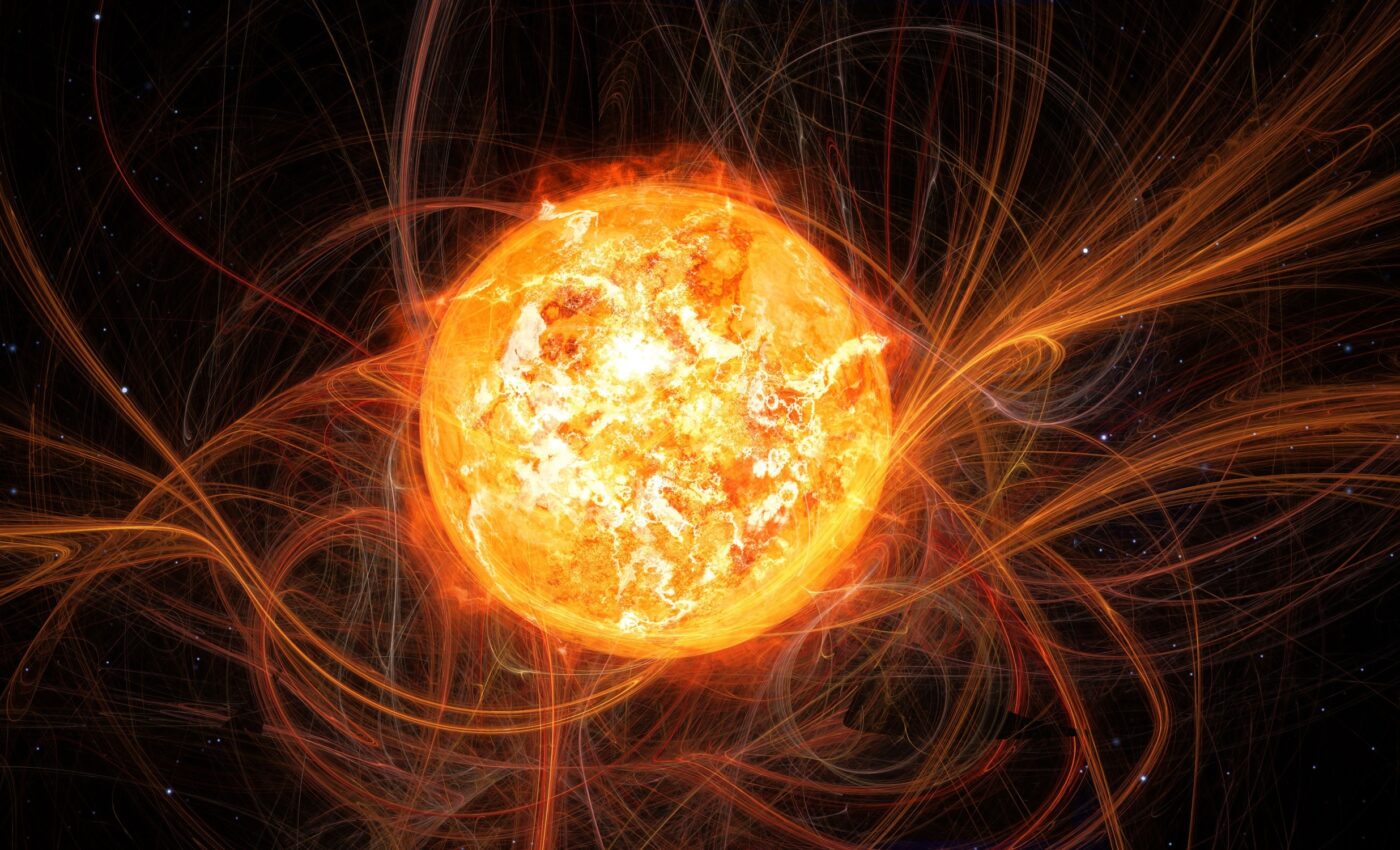
Origin of the Sun's magnetic field discovered after 400 years
For over 400 years, scientists have been puzzled by the origins of the sun’s magnetic field — a mystery that even baffled Galileo Galilei.
Recent findings by an international team of researchers, including engineers from Northwestern University, may finally offer a solution.
Through a series of complex calculations on a NASA supercomputer, the team discovered that the sun’s magnetic field is generated about 20,000 miles below its surface, contradicting previous theories that suggested a much deeper origin.
Peeling back layers of the sun’s magnetic field
The revelation not only deepens our understanding of the sun’s dynamic processes but also enhances our ability to predict powerful solar storms.
These storms, while sometimes providing stunning displays like the Northern Lights, can also cause severe damage to satellites, electrical grids, and radio communications on Earth.
“Understanding the origin of the sun’s magnetic field has been an open question since Galileo and is important for predicting future solar activity, like flares that could hit the Earth,” said study co-author Daniel Lecoanet, an assistant professor at Northwestern’s McCormick School of Engineering.
“This work proposes a new hypothesis for how the sun’s magnetic field is generated that better matches solar observations and, we hope, could be used to make better predictions of solar activity.”
Historical puzzle
Galileo first documented the sun’s magnetic activity in 1612, observing sunspots with early telescopes and even with the naked eye.
These dark patches, caused by the sun’s fluctuating magnetic field, have been studied extensively over the centuries.
Despite significant progress in understanding the solar dynamo – the process that generates the magnetic field – many questions have remained unresolved.
Previous theories suggested deep origins for the dynamo, predicting solar features that astronomers have never observed, such as strong magnetic fields at high latitudes.
Filling in the missing pieces
To address these gaps, the research team developed advanced numerical simulations to model the sun’s magnetic field. Their model accounts for torsional oscillations, a cyclical pattern of gas and plasma flow within and around the sun.
Unlike solid celestial bodies like Earth and the moon, the sun’s rotation varies with latitude, contributing to its complex magnetic behavior.
The 11-year solar magnetic cycle, mirrored by the torsional oscillations, pointed to a potential link between these phenomena.
“Because the wave has the same period as the magnetic cycle, it has been thought that these phenomena were linked,” Lecoanet explained.
“However, the traditional ‘deep theory’ of the solar magnetic field does not explain where these torsional oscillations come from. An intriguing clue is that the torsional oscillations are only near the surface of the sun. Our hypothesis is that the magnetic cycle and the torsional oscillations are different manifestations of the same physical process.”
Advancing solar predictions
Kyle Augustson, a postdoctoral fellow in Lecoanet’s lab, ran the numerical simulations that provided a quantitative explanation for properties observed in the torsional oscillations.
The model also clarified the patterns of sunspots in relation to the sun’s magnetic activity, addressing a key missing detail from the deep origin theory.
With this improved understanding of the sun’s dynamo, researchers are hopeful about enhancing forecasts for solar storms.
Such storms can significantly disrupt electrical and telecommunications infrastructure, including GPS systems.
The recent solar storms, for instance, knocked out navigational tools for farming equipment during peak planting season.
Looking back, the researchers cite the Carrington Event of 1859 as a cautionary example. This intense solar storm damaged Canada’s nascent telegraph system and serves as a stark reminder of the potential damage from future events.
“While the recent solar storms were powerful, we’re worried about even more powerful storms like the Carrington Event,” noted Lecoanet. “If a storm of similar intensity hit the United States today, it would cause an estimated $1 trillion to $2 trillion in damage.”
Unraveling the sun’s magnetic field
Though many aspects of solar dynamics remain mysterious, this research represents a significant leap forward in solving one of the oldest unsolved problems in theoretical physics: the origin of the sun’s magnetic field.
By enhancing our ability to predict dangerous solar activity, we can better prepare for and mitigate the potential impacts of future solar storms.
The study is published in the journal Nature.
—–
Like what you read? Subscribe to our newsletter for engaging articles, exclusive content, and the latest updates.
Check us out on EarthSnap, a free app brought to you by Eric Ralls and Earth.com.
—–













